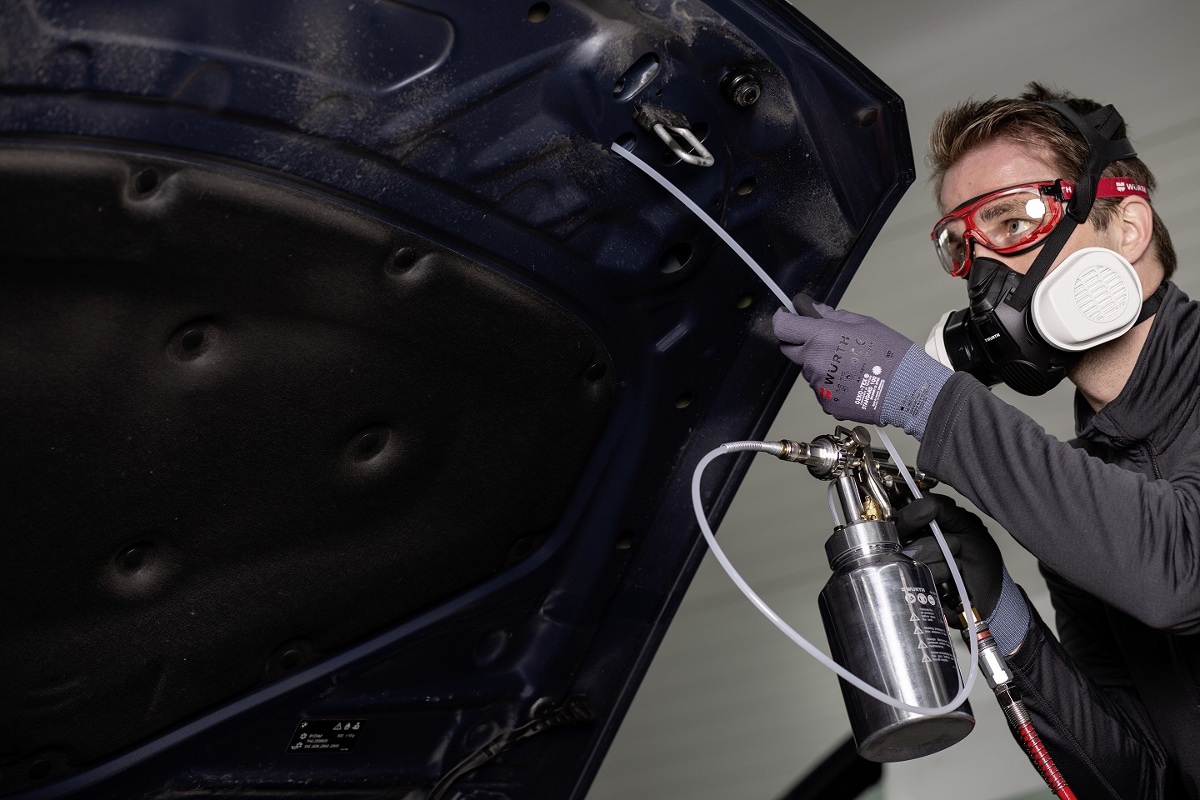
How to prepare the car body for winter?
 Tire or washer fluid changes are standard steps we take when winterizing a vehicle. Meanwhile, changing weather conditions and roads sprinkled with sand and salt are especially bad for the car body, which should also be taken care of at this time.
Tire or washer fluid changes are standard steps we take when winterizing a vehicle. Meanwhile, changing weather conditions and roads sprinkled with sand and salt are especially bad for the car body, which should also be taken care of at this time.
The quality of sheets and coatings used to make new cars is deteriorating. Therefore, corrosion develops in ever younger car models. Its rudiments can be seen already on a 3-year-old car. Winter blisters and poor road conditions only contribute to the formation of rust. At first, the effects of corrosion appear in less visible places, but rust quickly spreads to other parts of the car. Many people try to protect their vehicles from corrosion in garage conditions. Unfortunately, such actions do not guarantee long-term and effective protection. Properly carried out process of protecting the car from corrosion takes a long time and can take up to 3 days. This is due to the need to comply with the time intervals that allow the effective action of the relevant drugs. That is why it is so important that the car is inspected by experts in the workshop and appropriate anti-corrosion measures are applied.
To make sure that we rent a car to professionals, it is worth asking a few important questions, first of all - how long will the whole process take. You should beware of salons offering this type of service at an express rate, because their effectiveness is practically absent. It is also important to use what means will be used to secure specific elements. Currently, 4 types of preparations are available on the market - based on bitumen, rubber, paraffin or water. Chassis should be preserved with a bitumen-based or rubber-based agent, wheel arches with a rubber-based agent, and thresholds and profiles should be sealed with wax. There are also car services that, for the sake of their employees and the environment, offer car protection against corrosion with water-based preparations. This option applies to the chassis, wheel arches and sills, and its effectiveness depends on the specific conditions. Protecting a car against corrosion with water-soluble agents must take place under strictly controlled conditions - at the appropriate temperature and humidity.
– Before proceeding with protective measures, the garage worker must assess the condition of the vehicle. In case of damage to some body parts or visible rust stains on the paint surface, corrosion protection is only possible after they have been repaired, says Krzysztof Wyszynski, Product Manager at Würth Polska.
The process of car corrosion protection covers three areas: chassis, body and closed profiles. Maintenance begins with a thorough washing, drying (preferably in a heat chamber) and disassembly of the covers and exhaust system. Chassis components such as brakes and cables are protected from dirt. The car prepared in this way is ready for mechanical and chemical cleaning of sheet metal from corrosion. The process begins with the cleaning of the chassis from all corrosion centers, and then its thorough degreasing. In hard to reach areas where flash corrosion occurs, use a corrosion converter which is also an epoxy primer. This preparation, usually in the form of a spray, converts iron oxides, that is, corrosion, into a stable organometallic compound, due to which rust is neutralized and its development is stopped. Thanks to the epoxy resin contained in such a converter, an additional very durable, well-insulating and aging-resistant coating is created that separates the metal from aggressive factors - oxygen and moisture. Thus, even hard-to-reach places are reliably protected. After cleaning, the sheets and all elements of the undercarriage are protected with anti-corrosion primer, and when the preparation dries, it is applied to the dismantled elements.
See also: Electric Ford Mustang
The next step is to use a special agent in the closed profiles of the car, which creates a coating that protects against factors that contribute to rust. Closed profiles are located in the doors, hood and trunk, i.e. in hard-to-reach places where water accumulates due to condensation, which creates ideal conditions for the formation of rust. The best preparation is wax, which protects these elements for a long time. Colorless will be much better than yellow, thanks to which we will avoid ugly, hard-to-remove stains. It is extremely important to regularly pin closed profiles from the moment you buy a car. If corrosion begins to develop inside these elements, the only salvation is to replace them with new ones.
- Protecting the body is reduced to protecting the paintwork of the car. Here it is extremely important to thoroughly wash and, possibly, correct the paint by polishing. The next step is to properly wax the car body. These measures provide additional protection against harmful external factors and prevent dirt from sticking to the car. Waxing restores the shine of the paintwork and significantly improves the appearance of the car, says the expert.
The protection of the car against corrosion performed in this way will avoid costly body and paint repairs. In addition, it will increase the value and attractiveness of the car, make it easier to find a buyer and get a better price when reselling the car.
See also: Porsche Macan in our test

